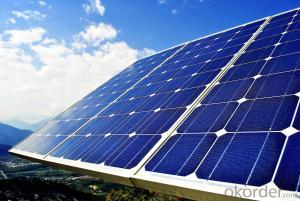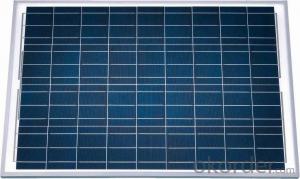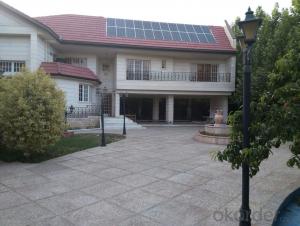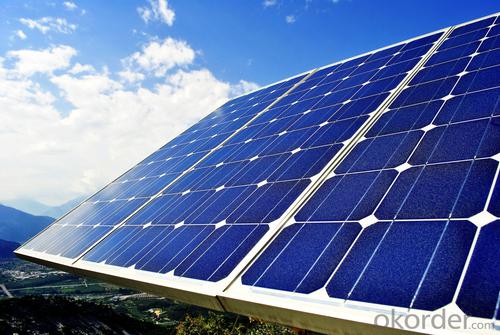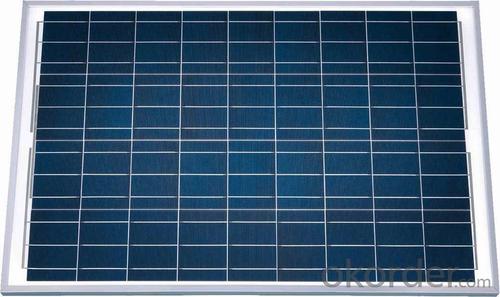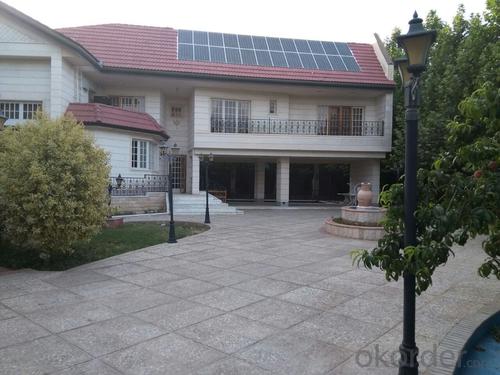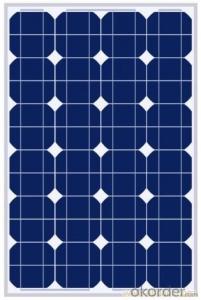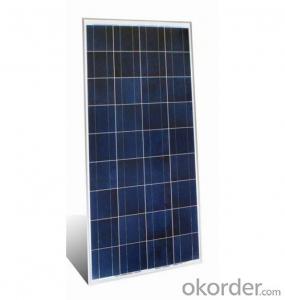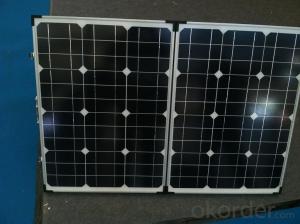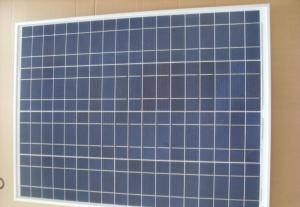4x12 Solar Monocrystalline Panels Made in China
- Loading Port:
- China main port
- Payment Terms:
- TT OR LC
- Min Order Qty:
- 10000 watt
- Supply Capability:
- 100000000 watt/month
OKorder Service Pledge
OKorder Financial Service
You Might Also Like
Specification
Solar Monocrystalline 125mm Panel Series(45W-50W)
Product Description
Monocrystalline Silicon Solar Panel (45-50W)
• 10 years 90% output warranty
• 20 years 80% output warranty
• High conversion efficiency mono/poly-crystalline amorphous silicon solar cells
• Modules incorporate high performance bypass diodes to minimize the power drop caused by shading
• High transmittance, low-iron tempered glass
• High performance EVA encapsulate to prevent destroying and water.
• AI frame: without screw, corner connection. 8 holes on the frame can be installed easily
• Good performance of preventing from atrocious weather such as wind and hails
• Certifications: CE IEC TUV VDE UL, Class I
Details
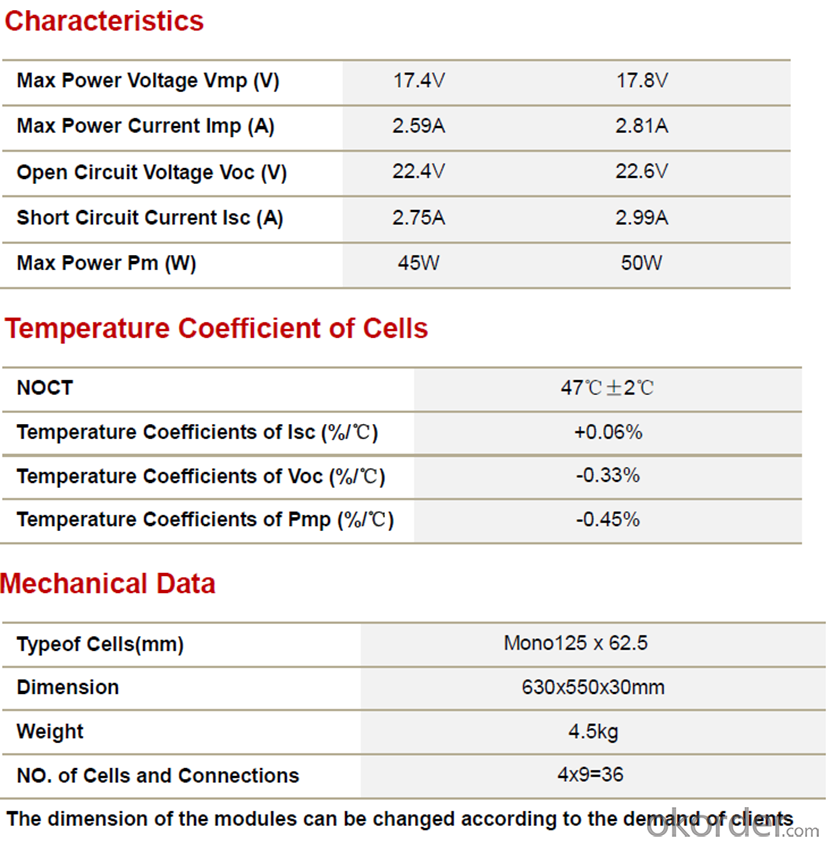
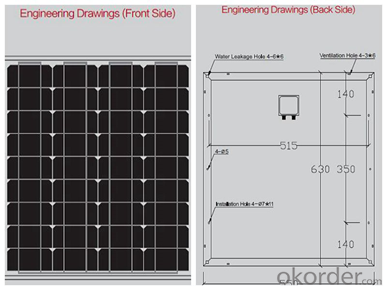
Certificate

Images
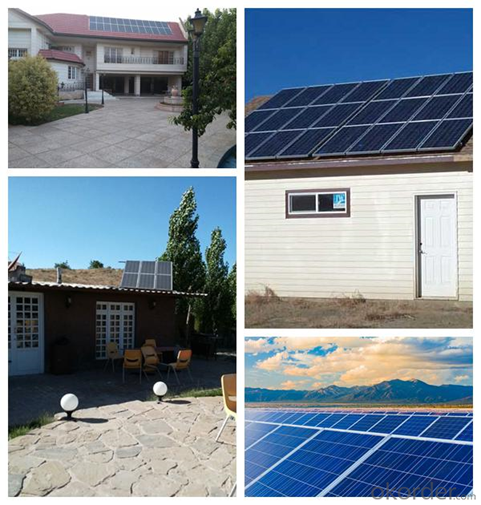
FAQ1
We have organized several common questions for our clients,may help you sincerely:
1.What price for each watt?
It depends on the quantity, delivery date and payment terms,
2.How do you pack your products?
We have rich experience on how to pack the panels to make sure the safety on shipment when it arrives at the destination.
- Q: If one buys tons of solar panels and sells electricity(possible in my country) can he earn money ?
- In theory, yes. But the fact that nobody is doing it implies there is something wrong with the idea. Solar panels are not exactly new.
- Q: What is the principle and structure of solar panels?
- inverter: solar direct output are generally 12VDC, 24VDC, 48VDC. In order to provide power to 220VAC appliances, it is necessary to convert the DC power from the solar power system into AC power, so it is necessary to use DC-AC inverter.
- Q: Can solar panels be used for powering a telecommunications tower?
- Yes, solar panels can be used for powering a telecommunications tower. Solar panels convert sunlight into electricity, which can then be used to power various devices, including telecommunications equipment. This renewable energy option is sustainable and environmentally friendly, making it an increasingly popular choice for powering remote or off-grid telecom towers.
- Q: i am looking for solar panels and wind mill to put around our house and i was wondering were to find them
- Your best bet would be to go down to a place that has magazines and look through their solar magazines, like Solar Today and Home Power. In these you'll will find many places online where you can buy solar and wind power products. They also have good reviews so that you can be an informed consumer and don't end up buying poor quality products. I've seen performance reviews on a variety of models.
- Q: Are there any safety concerns with solar panels?
- There are a few safety concerns associated with solar panels, but they are relatively minimal and manageable. The main concerns include the risk of electrical shock during installation or maintenance if proper precautions aren't followed, fire hazards due to faulty wiring or improper installation, and potential damage from extreme weather conditions. However, with proper installation, regular maintenance, and adherence to safety guidelines, these risks can be significantly mitigated, ensuring the safe use of solar panels.
- Q: I have an inverter and a battery 20 Amperes.Daily sun shine approx. 7 Hours.Do I need to buy anything or should I connect the solar panel to the Battery direct?
- No, don't connect the panel directly to the battery. You need to isolate the solar panel charging output from the AC-powered charger. A couple of high-current diodes arranged with their anodes connected to the charging sources in the positive supply line will allow either the charger or the solar panel to lift the voltage high enough to charge the battery, albeit with about 0.6 volts dropped across the diode. Both cathode ends would be connected to the battery. This arrangement allows a positive current to flow from either or both charging sources at the same time, although in practice, one will generally be higher than the other. Also, if the AC charger's voltage is significantly higher than the solar panel, the charger may always charge the battery. You would need to regulate its output to be slightly lower than the solar panel when it's near it's minimum useful operating voltage. (note that the 0.6 forward bias voltage on the diode might prevent the solar panel from completely charging the battery if it has any voltage regulation on its output)
- Q: For example, how many large solar panels would you need to operate a greenhouse with lighting for simulate sun during cloudy weather, a scheduled sprinkle system and other such things?I'm looking for a very in depth answer.
- if you are talking electrical solar panels, they are rated in watts they generate in full sun. usually these panels are used in tandem with batteries, so they charge up during the day and the batteries hold a reserve of power for later use. If you figure 8 hours of useful sunlight per day, then a 40 watt panel will light a 40 watt bulb for 8 hours. you can also measure capacity in watt-hours. this would be 40x8 = 320 watt-hours. the general method is to determine how much electricity demand you have over a 24 hour period to get the total watt-hours. then divide that by the watt-hour capacity of one panel to get the number of panels needed.
- Q: Can solar panels be used for powering electric boats or marine vessels?
- Yes, solar panels can be used to power electric boats or marine vessels. Solar panels convert sunlight into electricity, which can then be used to charge the batteries of electric boats or directly power their electric motors. This sustainable and renewable energy source offers a clean and environmentally friendly alternative to traditional fossil fuel-powered propulsion systems for marine transportation.
- Q: I would love to put in solar panels on my roof, but how hard would it be, and how expensive? Would I be able to do the work myself, or would I have to hire a pro?Also I live in Oregon, so much of the time it is overcast, so would it really be worth it?
- Not a good idea. The reason why panels are that much more expensive than cells is that the panels themselves are not that cheap either. If you start with the cells, you'll need - mechanical protection (hail, ice, snow) - electrical protection (i.e. waterproofing - if water comes in contact with the cells and wires, you'll get electrolysis which will corrode your wires and contacts faster than you can say 'b*mmer') - that setup will need to withstand temperatures between -20 and +30 °C (only guessing, might be worse) - oh, and the side facing the sun must be transparent (as far as possible) Now as to connecting the stuff: no, it will be neither easy to connect it to the house power nor to the grid - which is why that step (at least) in all countries I know of must be done by a certified electrician. If you get it wrong and you're lucky, only _your_ inverter will explode. Regarding the power: these 4W per cell (or kW for your shed) is the peak value, i.e. with the sun shining orthogonally onto the cells on a clear day. Since this (for a fixed installation) will only be true (at most) for a few minutes on a few days each year, your overall yield will be significantly less, probably more like 4 kWh/day for each clear day for each kWpeak you install _IF_ the shed roof is oriented exactly south and inclined towards the sun's noon position at the spring/autumn equinox (i.e. inclination angle = your geographical latitude). How many clear days do you have in britain? Yes, I had a similar idea for myself - but for one thing, the registered companies I addressed apparently weren't really interested in that small fry, plus the cost of the system + setup would barely have been amortized after the expected lifetime, even taking into account the (german) governmental subsidies. If I had the money to spare, I'd rather invest in a communal solar park. Much better ROI, the large installations get much better prices (per kW) for the setup.
- Q: How do solar panels affect the property's corporate social responsibility?
- Solar panels can positively impact a property's corporate social responsibility by reducing its carbon footprint and dependence on fossil fuels, thereby contributing to environmental sustainability. By generating clean and renewable energy, solar panels help to mitigate climate change and promote the use of clean energy sources. This demonstrates a commitment to environmental stewardship and can enhance the property's reputation as an environmentally responsible organization. Additionally, the installation of solar panels can inspire and encourage others to adopt renewable energy solutions, further promoting sustainable practices within the community.
Send your message to us
4x12 Solar Monocrystalline Panels Made in China
- Loading Port:
- China main port
- Payment Terms:
- TT OR LC
- Min Order Qty:
- 10000 watt
- Supply Capability:
- 100000000 watt/month
OKorder Service Pledge
OKorder Financial Service
Similar products
Hot products
Hot Searches
